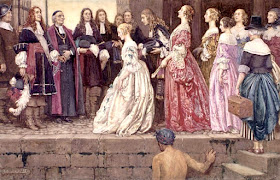It's hard to picture boulder strewn Santa Susana Pass movie locations as the ideal place to shoot a film based on the Royal Canadian Mounted Police, nevertheless quite a few Northwesterns have been filmed on the rocky slopes of the Iverson Ranch and Corriganville between the 1920s and 1950s.
O'Malley of the Mounted (1921) starring William S. Hart, Eva Novak and Leo Willis (Chatsworth) Artcraft
The Trail Beyond (1934) starring John Wayne, Noah Beery and Verna Hillie (Chatsworth Trains) Monogram
The Country Beyond (1936) starring Rochelle Hudson, Paul Kelly and Robert Kent (Iverson Ranch) 20th Century-Fox
King of the Mounties (1942) starring Allan Lane, Gilbert Emery and Russell Hicks (Iverson Ranch) Republic
North of the Rockies (1942) starring Tex Ritter, Lloyd Bridges and Bill Elliott (Corriganville) Columbia
The Royal Mounted Rides Again (1945) starring George Dolenz, Bill Kennedy and Milburn Stone (Corriganville) Universal
'Neath Canadian Skies (1946) starring Russell Hayden, Inez Cooper and Douglas Fowley (Corriganville) Lippert
North of the Border (1946) starring Russell Hayden, Inez Cooper and Douglas Fowley (Corriganville) Screen Guild
Trail of the Mounties (1947) starring Russell Hayden, Jennifer Holt and Emmett Lynn (Corriganville) Screen Guild
Where the North Begins (1947) starring Russell Hayden, Jennifer Holt and Tristram Coffin (Corriganville)
Border Saddlemates (1952) starring Rex Allen, Koko and Mary Ellen Kay (Iverson Ranch) Republic
Fort Vengeance (1953) starring James Craig, Rita Moreno and Keith Larsen (Corriganville) Allied Artists























